On the Road is a weekday feature spotlighting reader photo submissions.
From the exotic to the familiar, whether you’re traveling or in your own backyard, we would love to see the world through your eyes.
It’s Albatrossity Monday, and then we head back to the Alps!
(click on the image below for a bigger non-blurry version)
I still have lots of summer bird images to share here, but the fall is sparrow season here, and I thought it would be timely to share some images of these under-appreciated but gorgeous species. Lots of beginning birders shy away from sparrow ID, because these birds are small, often skulky, and don’t seem to have colorful or easily distinguishable field marks. All that is mostly true, but once you get into sparrows, you find that these challenges can be overcome, and it is worth it. I’d rather puzzle over sparrows than gulls any week!
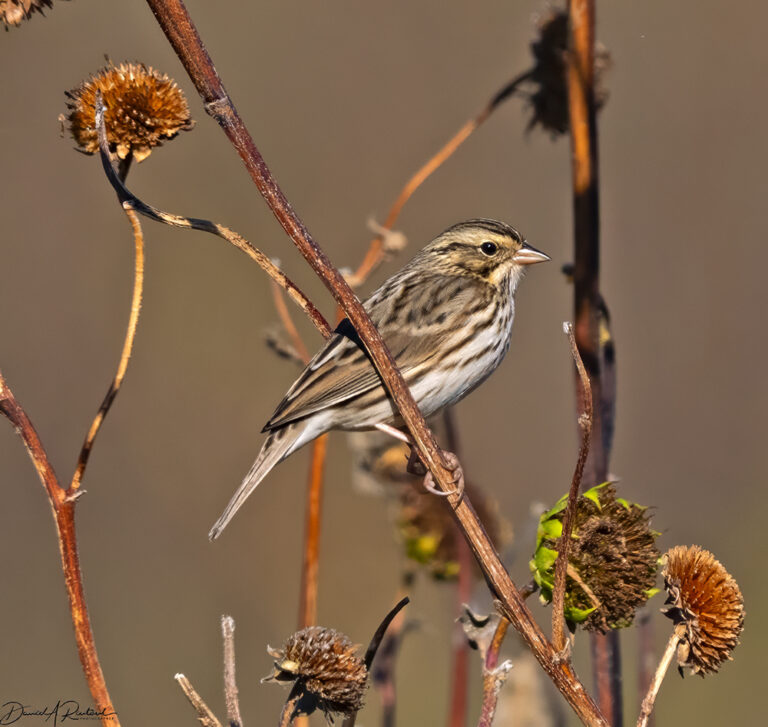
One of the earlier fall migrants into my patch of Flyover Country is the Savannah Sparrow (Passerculus sandwichensis). There are a whopping 17 subspecies of this sparrow currently recognized by taxonomists, These subspecies range across all of North America, only some of which can safely be identified as such in the field. So I have never bothered to learn them; whatever I learned would probably be wrong in a few years! These were a favorite species for a dearly departed friend of mine, Jim Rising, a native of Kansas City, graduate of Kansas University, and long-time researcher at the University of Toronto. Jim literally wrote the book on sparrows. Click here for larger image.
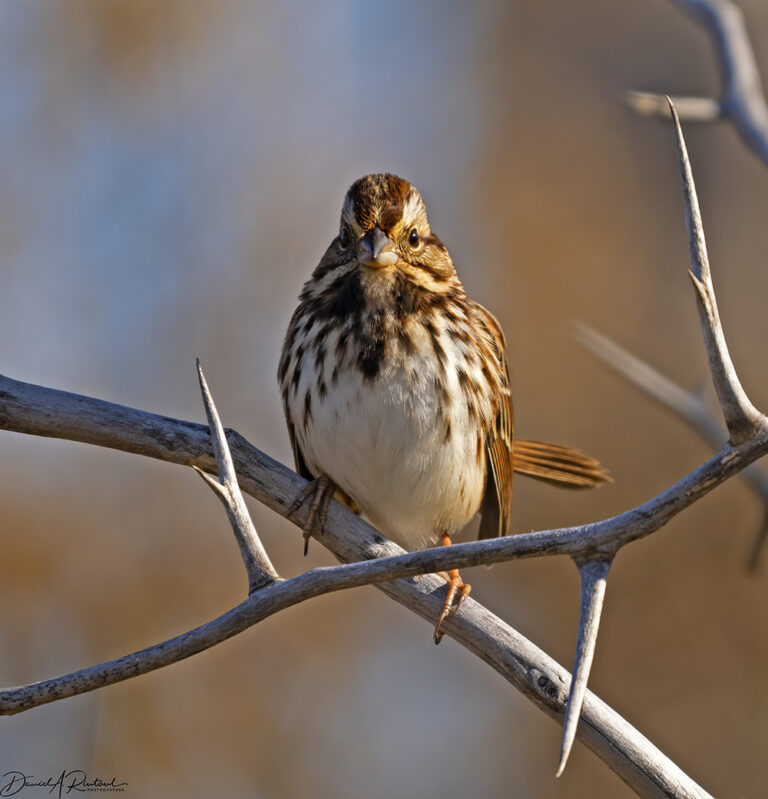
Another early migrant (and abundant winter resident) is the Song Sparrow (Melospiza melodia). Song Sparrows are also a widespread and taxonomically diverse species, with 24 recognizable subspecies. I don’t know the subspecies for these guys either, but this one seems to have an affinity for thorns. Perhaps auditioning for a role in The Thorn Birds… Click here for larger image.
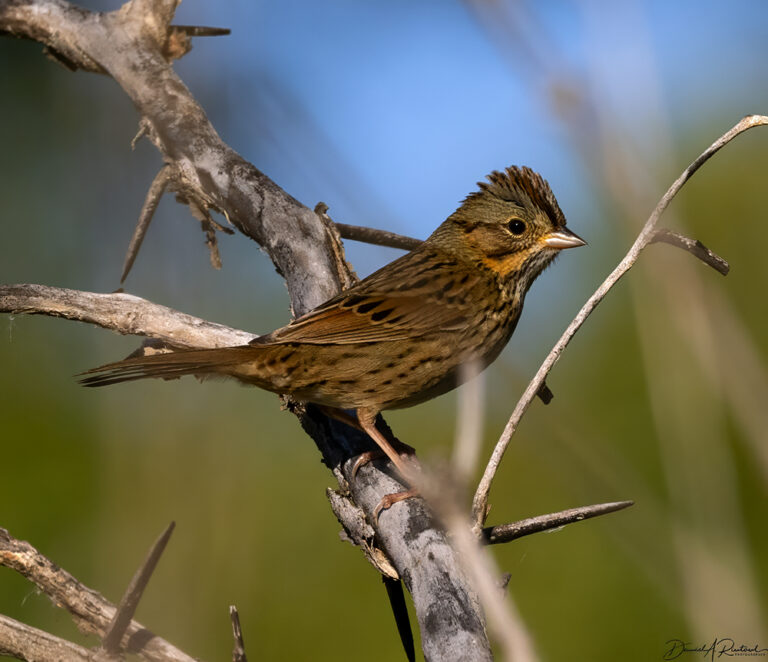
A very common fall migrant, and less common winter resident here, the Lincoln’s Sparrow (Melospiza lincolnii) breeds in the boreal forest of subarctic Canada and Alaska, as well as in the mountain ranges of the western US. Unlike the two species above, there are only three recognized subspecies of Lincoln’s Sparrow, and the differences between those are subtle and probably clinal (lots of birds with in-between plumages). This one is remarkably darker than any I have ever seen (and I’ve seen a LOT of them). Apparently, birds from the western US average darker, but this one is darker than any that I could find in the resources I have available. Click here for larger image.
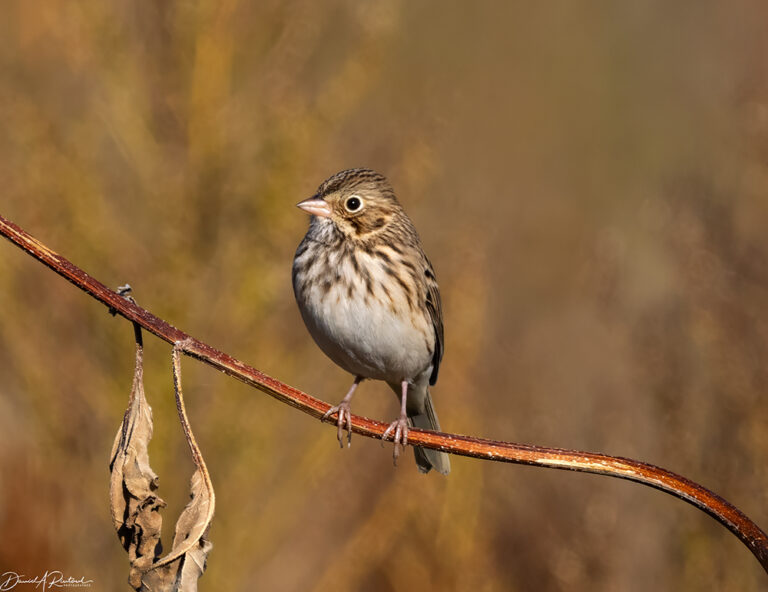
A later migrant, and irregular winter resident, the Vesper Sparrow (Pooecetes gramineus) is indeed pretty much streaky gray, white and brown. But that bold white eye-ring is a great field mark, and when it flushes, the white outer tail feathers are another. The bird is aptly named, as it often sings its sweet song during the twilight hours. Click here for larger image.
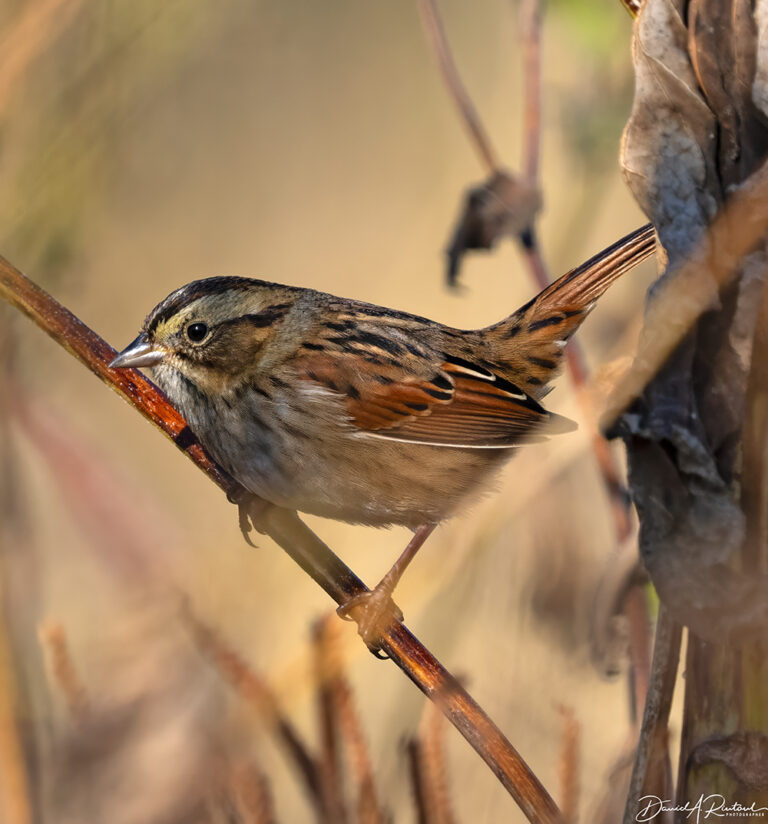
A true skulker, the Swamp Sparrow (Melospiza georgiana) is a robust relative of the Song Sparrow above, but with a white throat and distinctive rusty wings. These are mostly a species of the eastern US, although they do range across Canada all the way to northeastern British Columbia. In migration they favor weedy brushy habitat near water; wherever you find abundant Song Sparrows you will have a good chance of seeing one of these. Click here for larger image.
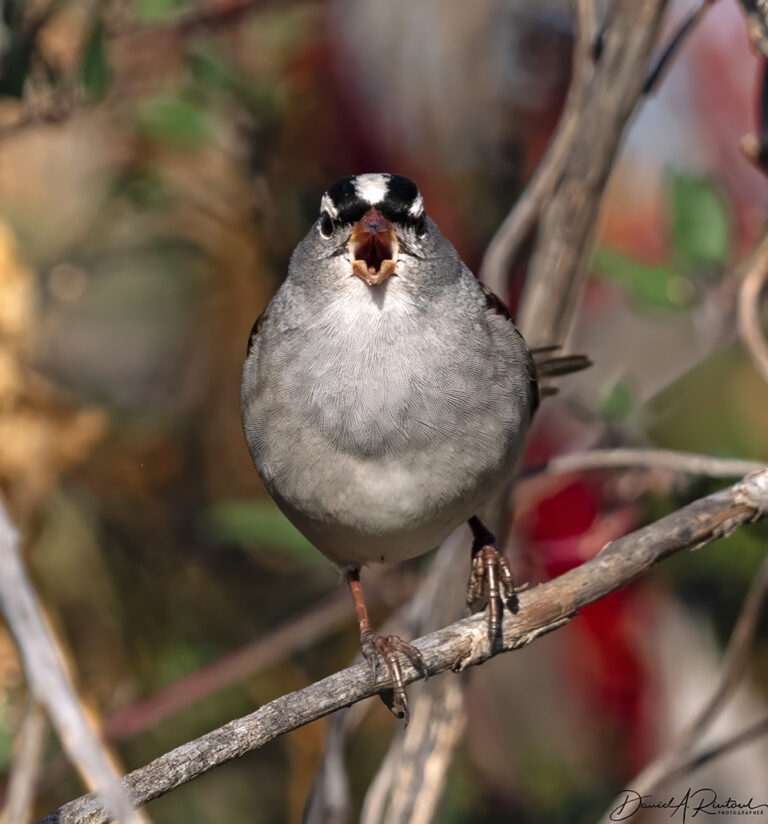
White-crowned Sparrows (Zonotrichia leucophrys) are familiar and conspicuous across nearly the entire southern half of the US in winter. Their abundance and hardiness make them good laboratory subjects as well. They are probably one of the most well-studied of all the sparrows; even I have my name on a publication that featured these handsome sparrows! Click here for larger image.
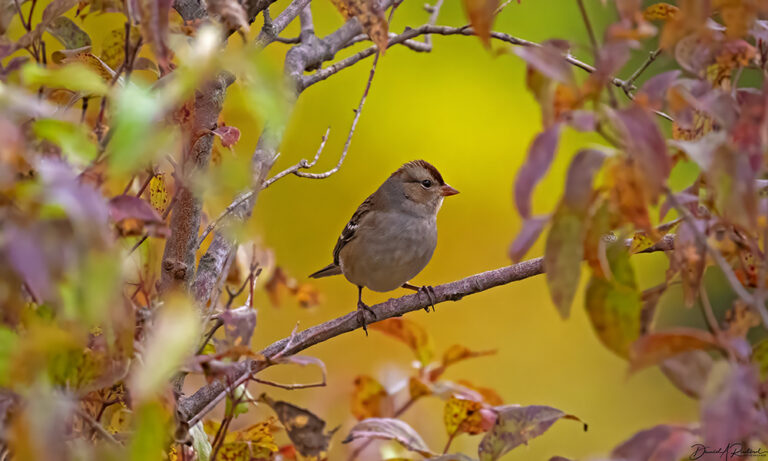
White-crowned Sparrows are also somewhat unusual in that they exhibit a distinct first-year plumage, which does not include the eponymous white crown. Click here for larger image.
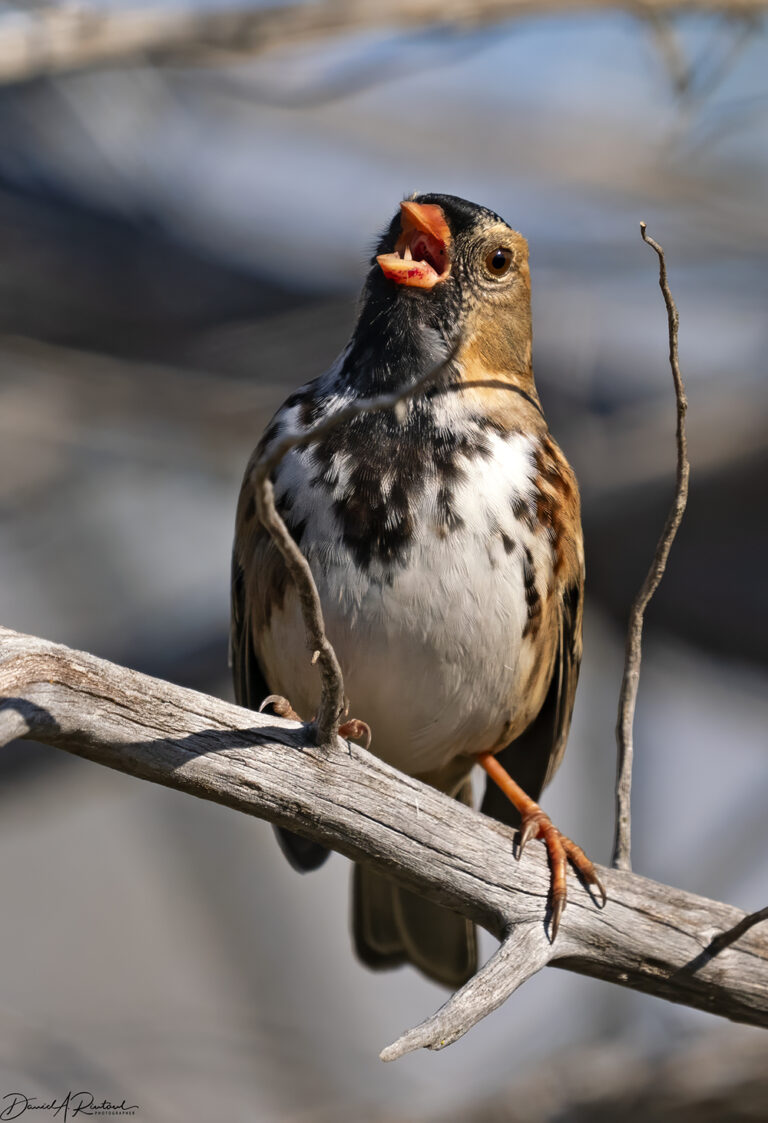
Contrary to the situation with many of the widely-distributed species above, the Harris’s Sparrow (Zonotrichia querula) is a sturdy resident of Flyover Country. They breed in the transition zone between subarctic boreal forest and Arctic tundra, and winter in the Plains states of NE, KS, OK, and TX. Come visit sometime in winter, and you will see plenty of these large and unique sparrows. Click here for larger image.
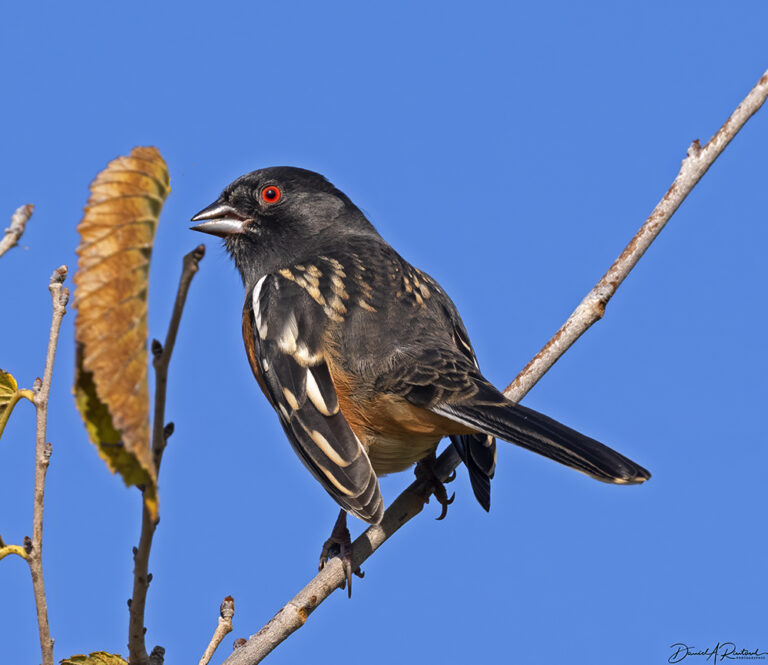
Towhees are just mega-sparrows, and this Spotted Towhee (Pipilo maculatus) is a fine representative of that tribe. These are pretty common in the right habitat here in winter; I found a total of 5 Spotted Towhees that day in the general area where this one was photographed. Click here for larger image.
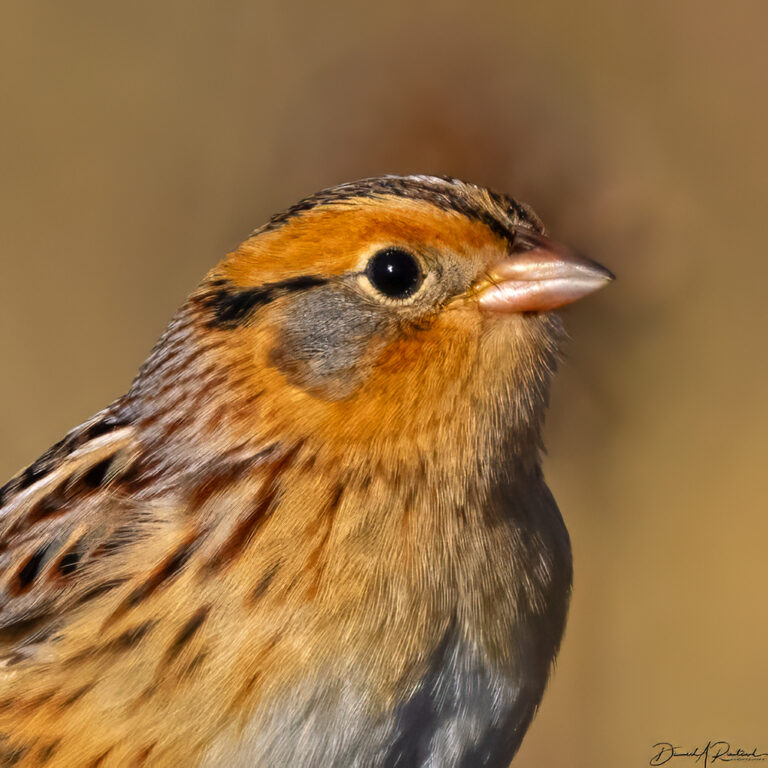
Finally, LeConte’s Sparrow (Ammospiza leconteii) is the exception to the rule that sparrows are drab brown birds. The bright color of this bird has been likened to “a twenty-dollar gold piece”, although perhaps a less-dated description would be “pumpkin spice”. Sadly, we see these birds here only during migration, but I look forward to their reappearance each spring and fall. Click here for larger image.

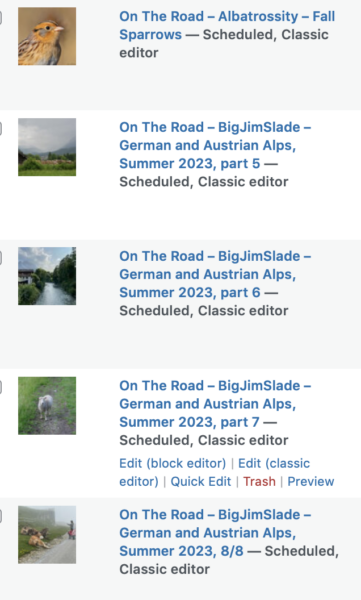
Don
“I’d rather puzzle over sparrows than gulls any week!”
Except you would be at the beach, or a garbage dump in Massachusetts.
Albatrossity
@Don: No, at the beach I mostly puzzle over shorebirds!
Trivia Man
If you see one in San Francisco is it a Bay-Gull?
kalakal
How nice to see the smaller birds getting the attention rather than their bigger flashier cousin. Nice photos, thanks!
SteveinPHX
I think I need to spend a year in Sparrow ID class! Thank you for wonderful photos.
mvr
Thanks for these!
I really have trouble id-ing sparrows. We have tons of house sparrows in our backyard but I think we get occasional others. Part of my trouble is that different life-stages of house sparrows are different enough looking to me that the fact that one looks different often isn’t enough for me to know it isn’t a house sparrow. Another problem is that I don’t know what to look for to decide what other kind of sparrow it might be.
I do believe I’ve seen song sparrows on campus.
Tenar Arha
Oh, these are lovely. Thank you!
Madeleine
Fascinating sparrows! Thanks, as always for the pics, and, today, for the vesper sparrow song.
Kent
I enjoy these threads, but what does the title “Albatrossity” refer to?
sab
Thank you. You have been saying for years that sparrows are easy to i.d. but to me they all look like house sparrows.
Yutsano
There are two birds with their mouths open but only the white-crown sparrow is having srs bidness with the photographer. I do love me some sparrow action on an otherwise gloomy Monday morning.
Miss Bianca
God, how I love your photos.
StringOnAStick
These are not only lovely photos, they are portraits!
munira
Beautiful. The composition of that first photo is amazing.
BigJimSlade
What a great set! Especially the first one and the 2nd white-crowned one, settled in soft colors :-)
Albatrossity
@Kent: Albatrossity is the internet name of the author of the post. Me.
swiftfox
Marshall Faintich on the Virginia bird list serve posted his first-of-season Lincoln’s Sparrow this morning. Located in the central VA Blue Ridge.